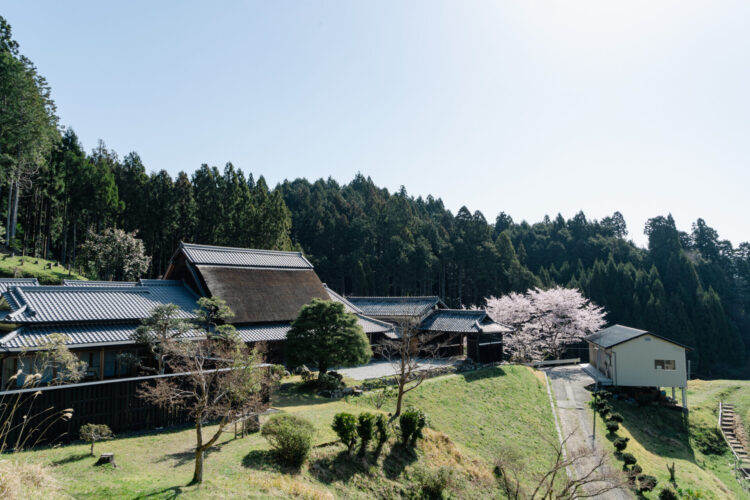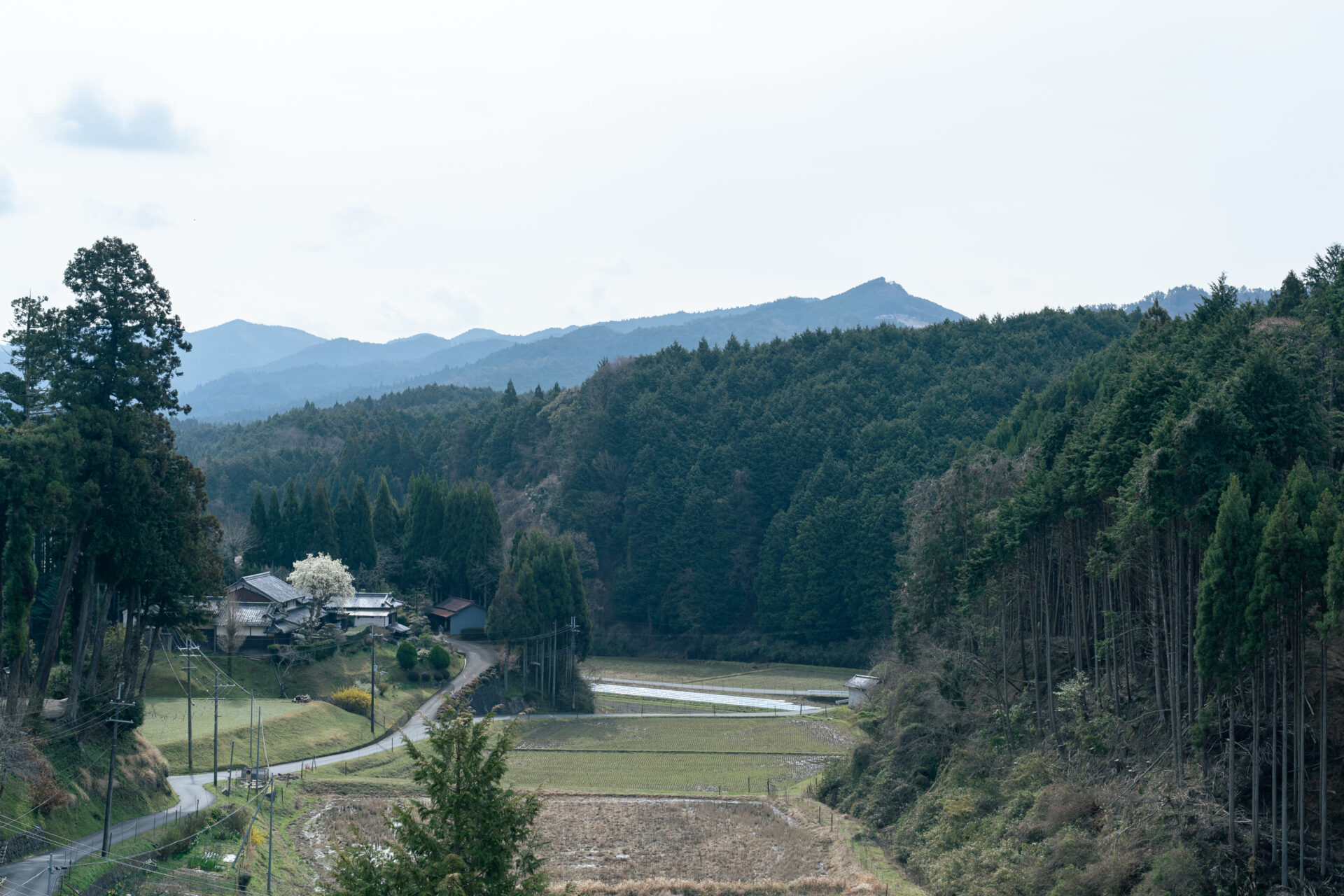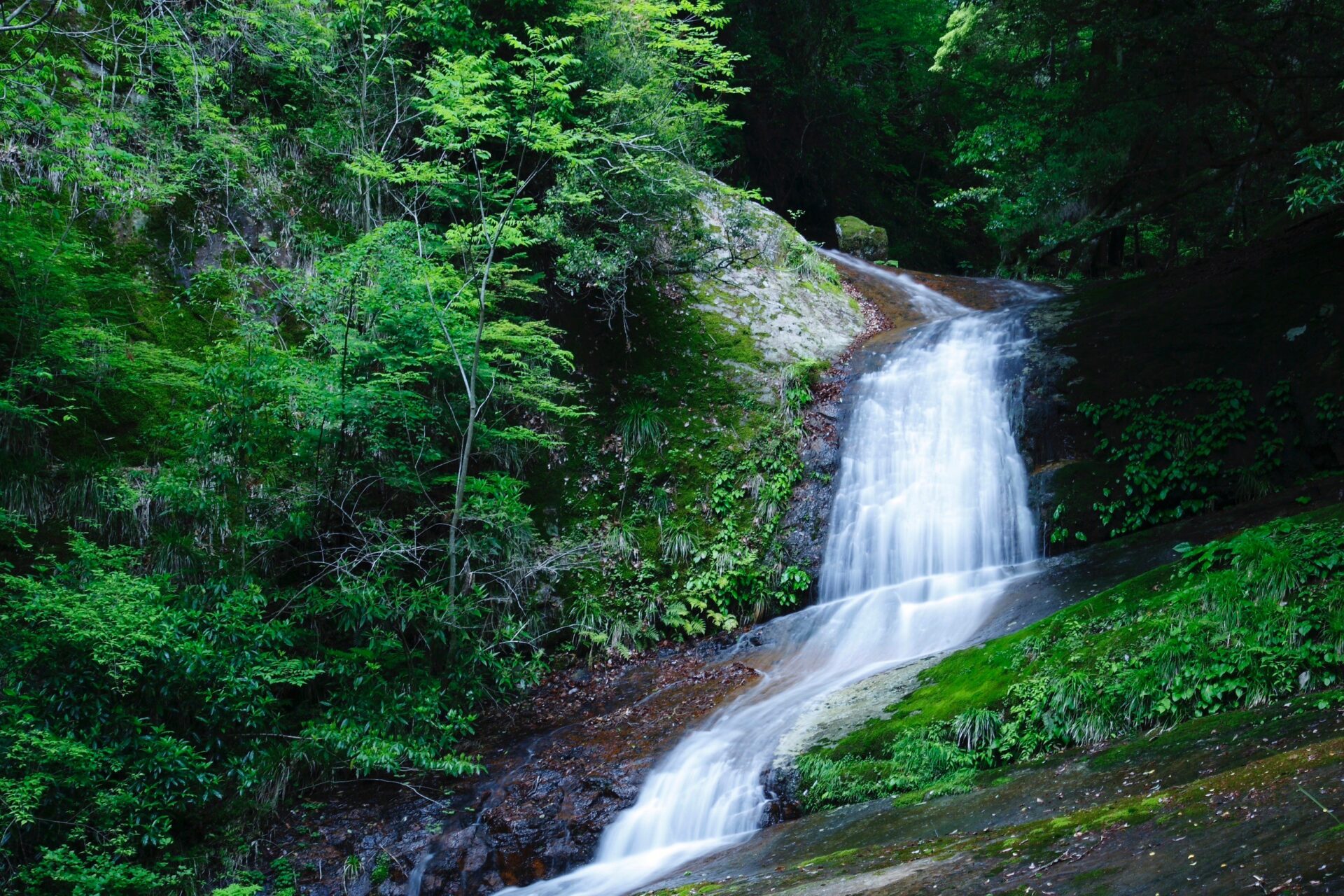Surrounding Area: Landscape
English

Yatakiya is nestled deep in a traditional satoyama landscape, amongst foothills replete with rice paddies, coppiced forests, and streams. Found across Japan, these landscapes represent a place of interaction and cooperation between man and nature: forests are sources of foraged ingredients, like matsutake mushrooms, bamboo for creating supports for drying rice, and timber. In managing these forests, they are kept thin enough to encourage light to enter and biodiversity to thrive. Traditional agricultural practices can be spotted all around the area surrounding Yatakiya; on the drive up, you may spot an old wooden water wheel, once used to thresh and mill locally grown rice. Directly below Yatakiya, dandanbatake (terraced rice paddies) flow downwards, making intelligent use of the narrow foothill valleys.

Looking beyond the gentle semi-agricultural landscape, Uda is also brimming with dramatic natural features. There are numerous ‘Power Spots’ in the Uda area, natural locations where one can feel a great concentration of spiritual energy. Notable amongst these is Ryuketsu Shrine and the upstream Ryuketsu Cave, said to be the dwelling spot of a water deity, in front of which a waterfall flows. Elsewhere, Ryuogabachi Pond is a mysterious ‘mirror’ pond, which on still days reflects the sky and the mountains in its glass-like surface, whilst the Ryuchin Falls near Murou Dam shine emerald in the sunlight. The ‘ryu’ of all four is the Japanese character for ‘dragon,’ a powerful symbol for the strength and strangeness of these spots.

Provided by Uda City
Along with the numerous shrines located beside striking natural features, Uda also offers other opportunities to enjoy nature and culture simultaneously. In particular, Murou Art Forest is a remarkable open-air sculpture museum created by Israeli sculptor Dani Karavan, whose large-scale sculptures interact with and respond to the surrounding landscape. For instance, Sun Tower and Gate is a series of arches along a pathway intersected by a pyramid. The route of the path adheres to the latitude of the ‘sun road,’ an ancient path following the movement of the sun that takes one from Nara to Ise shrine. Meanwhile, Wavy Ground leads one to Saint Kobo’s Well, a legendary well, and another instance of Karavan’s sculpture focusing one’s mind on the intermingling of religion and nature that has existed since antiquity in Nara.
Indeed, whether admiring the towering cypress trees on the hike up to Oku-no-In at Murou-Ji Temple, or the enormous miroku magaibutsu Buddha carving by the Udagawa River, it becomes near impossible to talk of the nature and landscape around Uda without becoming attuned to a deep spirituality.
>> BOOK NOW <<
★Surrounding Area: Landscape
Surrounding Area: Community and Culture
This text is written by Gabriela Mancey-Jones who is studying in Japan at the invitation of the Daiwa Anglo-Japanese Foundation, through interviews conducted in February 2024. She is looking to specialize in cultural anthropology with a Japan focus.